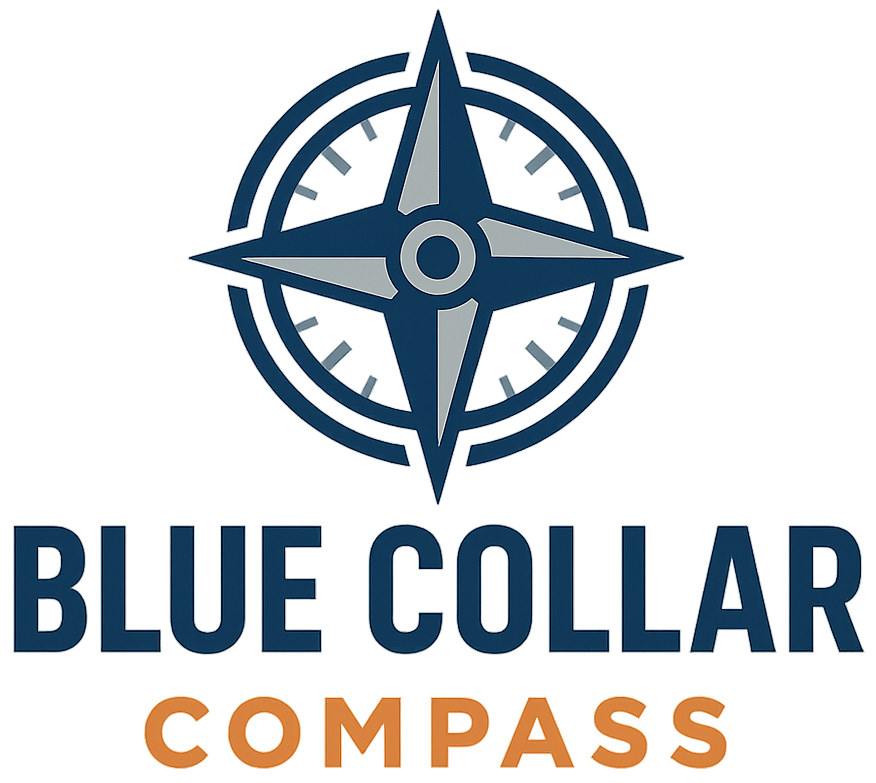“What if apps charged cash instead of your data? Discover the hidden cost of free services and rethink the true price of your online privacy.”
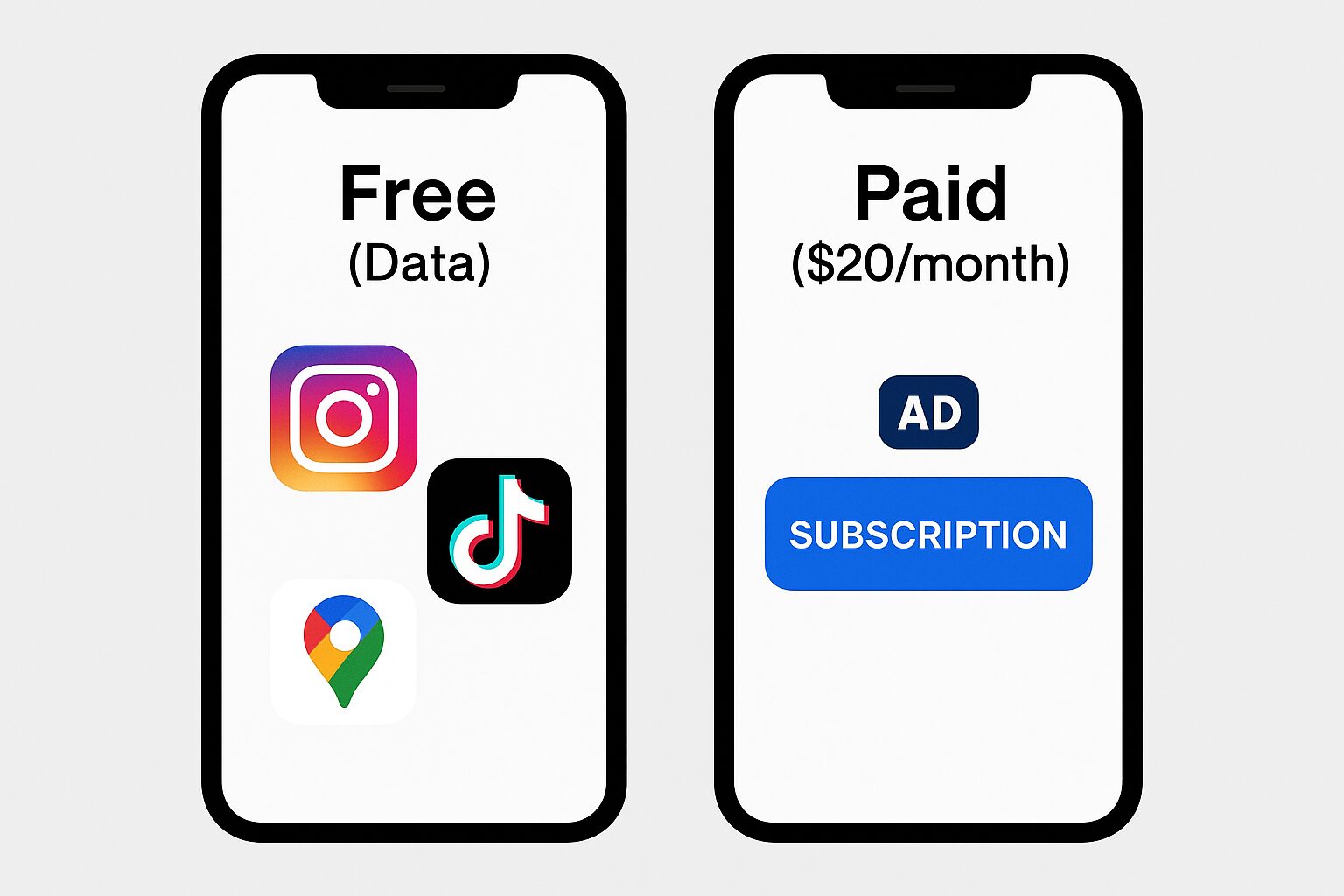 Imagine this: Instagram, TikTok, or Google Maps sends you a notification tomorrow morning. Instead of being “free,” these apps now cost $20 per month. No ads, no tracking, no harvesting your data—just a straightforward subscription.
Imagine this: Instagram, TikTok, or Google Maps sends you a notification tomorrow morning. Instead of being “free,” these apps now cost $20 per month. No ads, no tracking, no harvesting your data—just a straightforward subscription.
Would you still use them?
Most of us would pause. Some apps might feel worth it, while others would suddenly seem optional. And that hesitation is the heart of the issue: free isn’t free. In today’s digital economy, your data is the currency.
Every scroll, every search, every purchase leaves behind a trail—your digital footprint—that companies package, analyze, and monetize. You may not hand over cash, but you’re paying with something just as valuable: information about who you are and how you behave.
This blog post introduces what I call the Privacy Trade-Off Test. It’s a thought experiment designed to help you rethink the hidden costs of your favorite “free” apps and decide whether they’re truly worth it—if you had to pay with cash instead of data.
The Illusion of “Free” Apps
Tech companies love the word “free.” It’s the ultimate marketing hook: instant access with zero upfront cost. Social media apps, search engines, weather trackers, shopping platforms—they all pitch themselves as no-cost gateways to convenience.
But here’s the reality: while you don’t pay with dollars, you absolutely pay with data. Every click, like, and search feeds into a massive ecosystem of surveillance and monetization.
Consider a few everyday examples:
- Social Media (Facebook, Instagram, TikTok): These platforms don’t charge you, but they build incredibly detailed advertising profiles to sell hyper-targeted ads.
- Search Engines (Google): “Free” searches power a multi-billion-dollar ad machine that thrives on your queries, location, and browsing habits.
- Shopping Apps (Amazon, Shein, Temu): These aren’t just about transactions—they also collect purchase histories, wish lists, and browsing behaviors to optimize upselling.
The phrase “hidden cost of free apps” is more than a buzzword. It’s a reminder that what feels free is often the most expensive in terms of privacy and autonomy.
The Real Value of Your Data
If your personal data is the fee, what’s it actually worth?
For companies, it’s a goldmine. Data powers: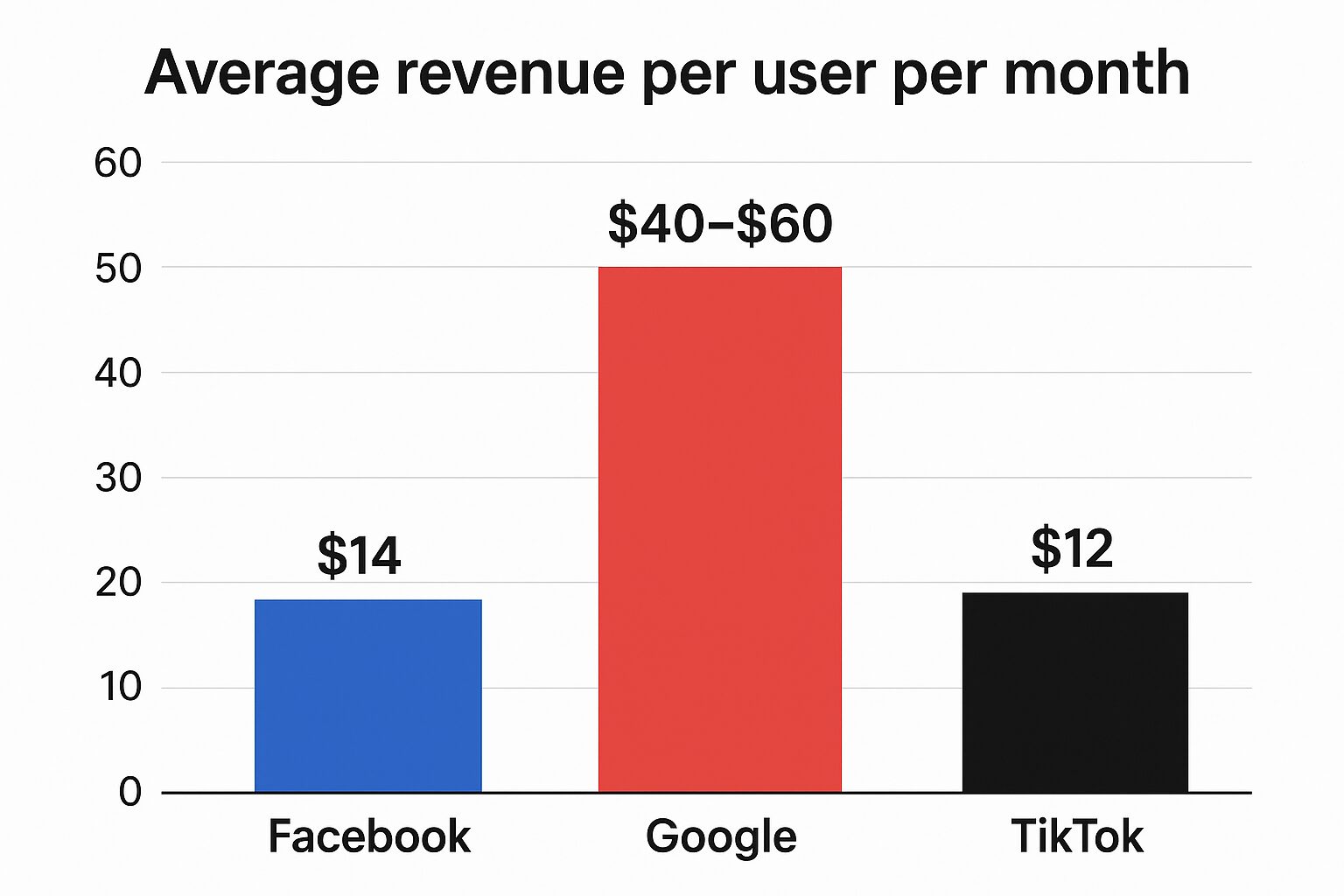
- Ad Targeting: The reason you see ads for sneakers right after Googling “running tips.”
- Product Development: Your behavior helps companies tweak features, roll out updates, and keep you hooked.
- Behavioral Predictions: Advanced algorithms can forecast not just what you’ll buy, but how you’ll think, vote, or behave.
The numbers may surprise you. According to various studies and market estimates:
- The average Facebook user is worth about $14 per month in ad revenue.
- Google, with its search dominance and wide ecosystem (Gmail, Maps, YouTube), may pull in $50+ per user monthly in value.
- Data brokers, the shadowy companies you never hear about, buy and sell your data for just a few cents per transaction—but the scale multiplies that into billions of dollars.
Your digital footprint is so profitable because it’s unique. Unlike cash, which gets spent and disappears, your data keeps generating revenue every time it’s shared, resold, or analyzed.
The Cash Trade-Off Test
Here’s where the thought experiment gets interesting.
Imagine if every app that currently harvests your data had to bill you directly instead. No tracking, no ads—just a cash price that reflects the value they would otherwise extract from your data.
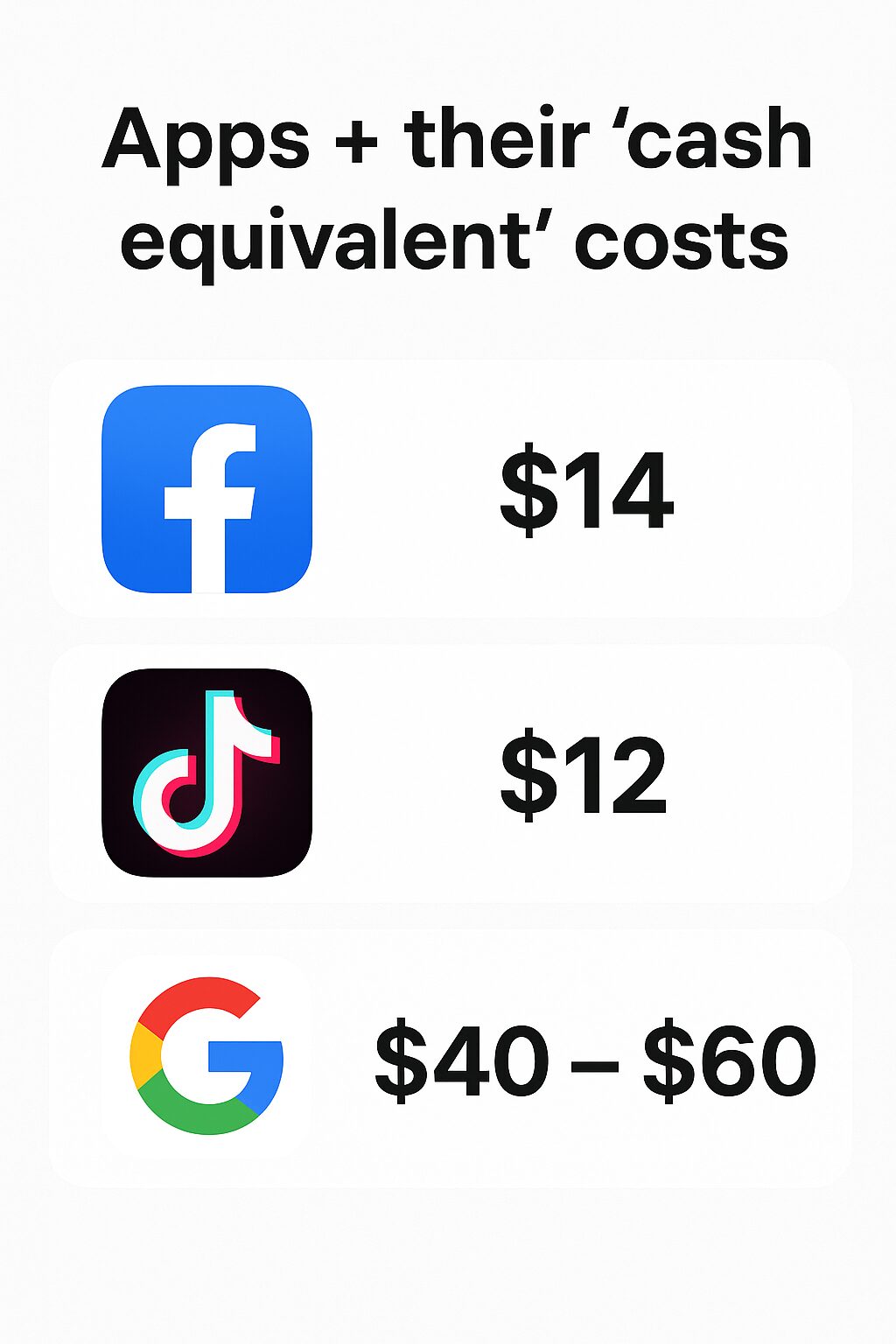 Some rough “data-to-dollar” conversions:
Some rough “data-to-dollar” conversions:
- Facebook/Instagram: ~$14/month per user
- TikTok: ~$12/month per user
- Google (Search, Maps, YouTube combined): $40–$60/month per user
- Spotify (with ads): $7–$10/month per user
- Amazon (non-Prime users): ~$8/month value in browsing and purchase history
Suddenly, those “free” apps look a lot less free.
So, here’s the challenge: would you pay in cash, or walk away?
- Would you keep using Google Maps if it cost $15/month?
- Is TikTok still worth $12 if your privacy were completely protected?
- Would you use Facebook less—or at all—if it cost real money instead of data?
This reframing makes us question not just the value of the apps, but also the bargain we’ve unconsciously struck with them.
Winners and Losers: Which Apps Would Survive?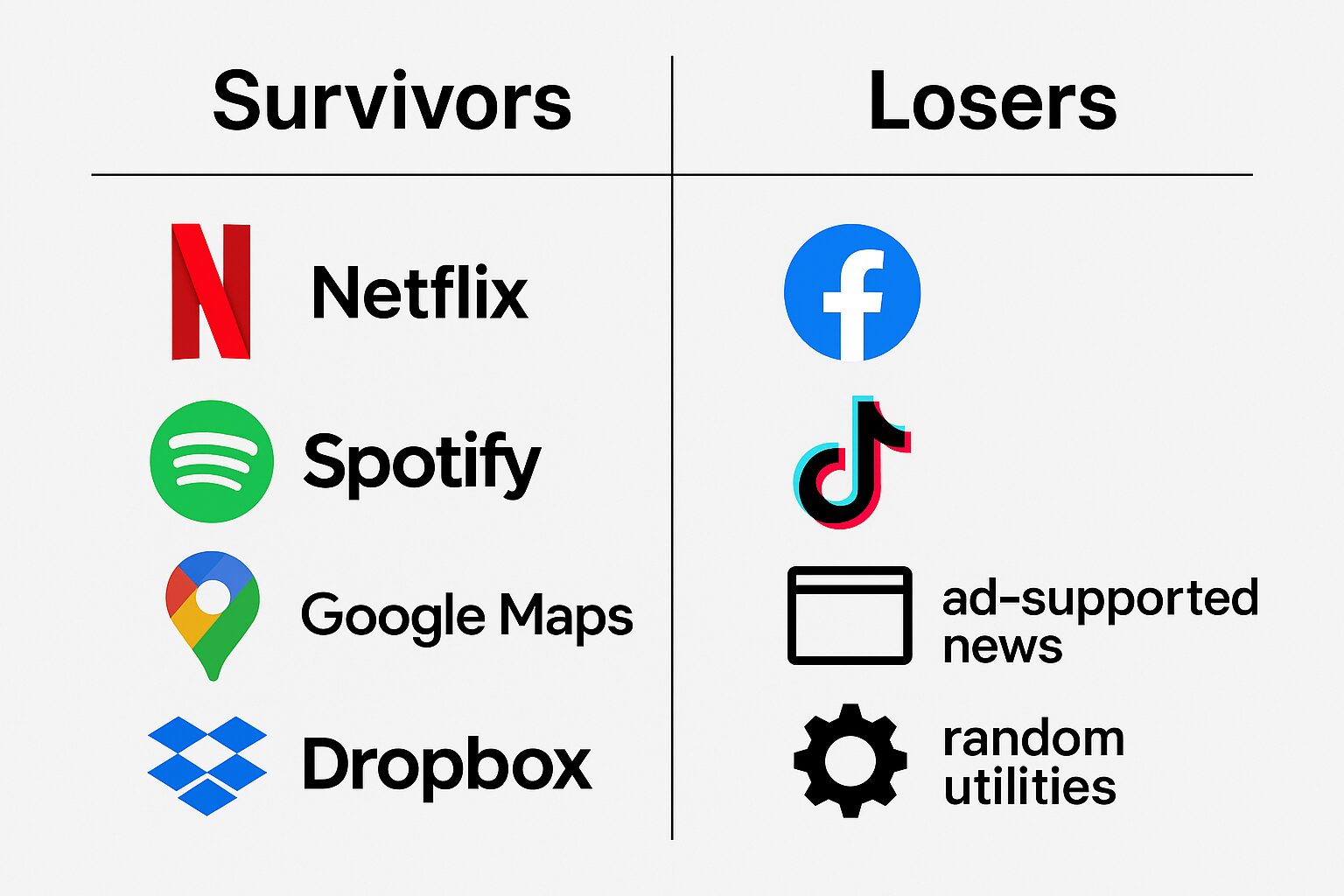
If the Privacy Trade-Off Test were real, not every app would make it.
Likely Survivors:
- Netflix & Spotify: These already run on subscription models. Users are used to paying for entertainment, and many would continue.
- Google Maps: Travelers, commuters, and delivery drivers might pay for reliable navigation, though perhaps not everyone.
- Cloud Storage (Dropbox, iCloud, Google Drive): Essential for professionals, worth paying for directly.
Likely Losers:
- Facebook & TikTok: While highly addictive, their value proposition is less clear when stripped of “free.” Many might drop off rather than pay.
- Ad-Supported News Apps: With so many alternatives, few would pay cash just to scroll headlines.
- Random Utility Apps (flashlight apps, free games, weather apps): These would collapse without ad-driven revenue.
The implications are huge. The current business model of tech is fueled by data harvesting at scale. If companies had to charge directly, the market would shrink, innovation would slow, and many “free” conveniences would disappear. But maybe that’s not such a bad thing. It could force companies to design better, more sustainable products—ones people would happily pay for.
The Psychological Twist: Why We Accept Data Payments
Here’s the paradox: most people would balk at paying $5 per month for an app but freely give away far more than $5 worth of data every single day. Why?
A few reasons: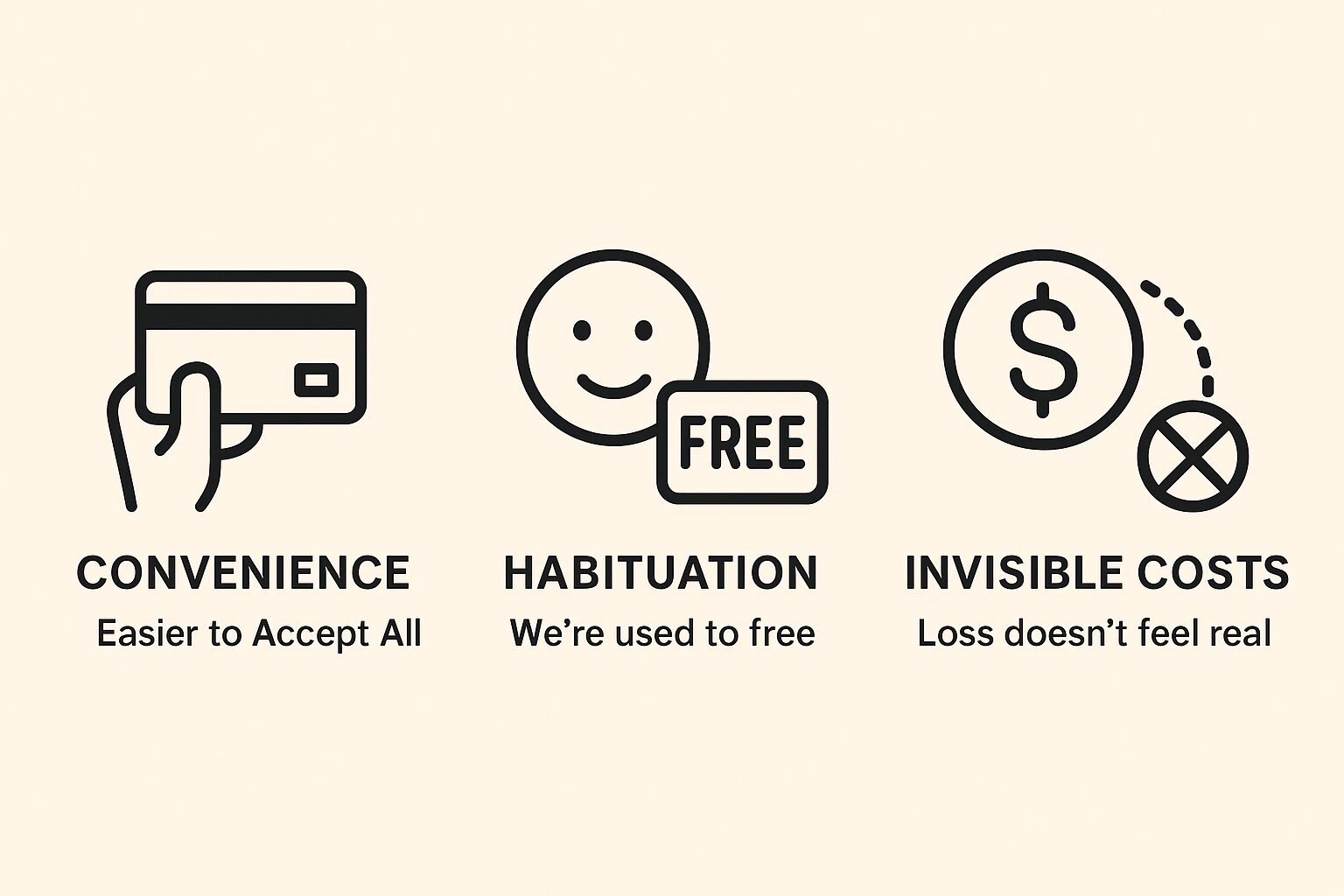
- Convenience Over Caution: It’s easier to click “Accept All” than to dig through settings.
- Habituation: We’ve grown up with the idea that apps and online services should be free. Paying cash feels unnatural.
- The Hidden Nature of Data Payments: Cash leaves your bank account—you feel the loss. Data slips away invisibly, so the cost doesn’t register.
Think about this: many people complain about Spotify charging $10/month for music but have no issue letting Facebook earn $14/month from their data. That’s a classic example of psychological pricing distortion.
In short, people undervalue privacy because the trade-off is invisible, abstract, and delayed—whereas cash feels immediate and painful.
What This Means for Data Privacy Choices
So, where does this leave us as users?
The Privacy Trade-Off Test isn’t just a thought experiment—it’s a call to examine your own digital habits. If an app isn’t worth paying for with cash, maybe it’s not worth paying for with your data either.
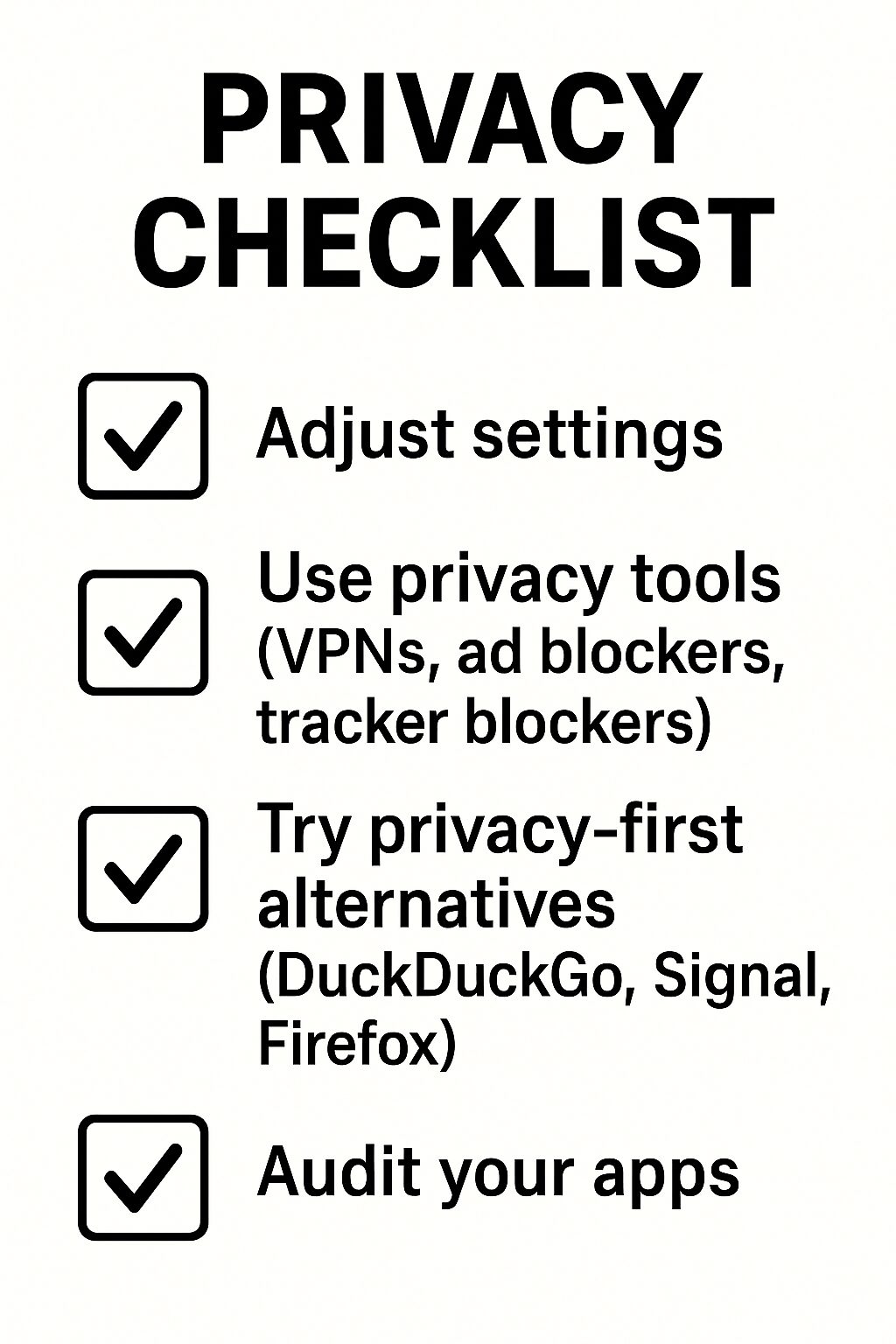 Here are a few ways to take control of your data privacy today:
Here are a few ways to take control of your data privacy today:
- Adjust Your Privacy Settings: Most apps allow you to restrict tracking, ad personalization, and data sharing—though they don’t make it easy.
- Use Privacy Tools: Ad blockers, VPNs, and tracker blockers can drastically reduce your exposure.
- Choose Privacy-First Alternatives: Instead of Google, try DuckDuckGo or Brave Search. Instead of WhatsApp, try Signal. Instead of Chrome, try Firefox.
- Audit Your Apps: Go through your phone and ask: Would I pay cash for this if it weren’t free? If not, maybe it doesn’t deserve my data either.
Data privacy doesn’t mean going off-grid. It means being intentional, informed, and willing to walk away from services that aren’t worth the trade-off.
Conclusion
The bottom line is simple: “free” apps aren’t free. Your data is the fee, and it’s often worth more than you realize.
The Privacy Trade-Off Test flips the script. By asking yourself which apps you’d still use if you had to pay with cash instead of data, you gain clarity on which ones truly add value—and which ones are just quietly siphoning your information.
So here’s the challenge: take a moment today and list your five most-used apps. Then ask yourself—would I pay real money for this if my data weren’t the currency?
The answer may surprise you.
👉 Comment below: Which app would you still pay for if your data wasn’t the currency?
